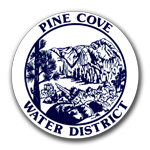25 Things YOU Can Do To Prevent Water Waste
9 Things you can do to save water in the bathroom
- Check your toilets for leaks. Put a little food coloring in your toilet tank. If, without flushing, the color begins to appear in the bowl, you have a leak that should be repaired immediately
- Stop using the toilet as an ashtray or wastebasket. Every time you flush a cigarette butt, facial tissue, or other small bit of trash, you waste five to seven gallons of water
- Put plastic bottles in your toilet tank. To cut down on water waste, put an inch or two of sand or pebbles inside each of two plastic bottles to weigh them down. Fill them with water and put them in your toilet tank, safely away from operating mechanisms. In an average home, the bottles may displace and save ten or more gallons of water a day.
- Take shorter showers. Long, hot showers can waste five to ten gallons every unneeded minute. Limit your showers to the time it takes to soap up, wash down, and rinse off.
- Install water-saving shower heads or flow restrictors. Your local hardware or plumbing supply store stocks inexpensive water-saving shower heads or restrictors that are easy to install.
- Take baths. A bath in a partially filled tub uses less water than all but the shortest showers.
- Turn off the water after you wet your toothbrush. There is no need to keep water pouring down the drain. Just wet your brush and fill a glass for mouth rinsing.
- Rinse your razor in the sink. Fill the bottom of the sink with a few inches of warm water. This will rinse your blade just as well as running water, and is far less wasteful.
- Check faucets and pipes for leaks. Even the smallest drip from a worn washer can waste 20 or more gallons a day. Larger leaks can waste hundreds.
6 Things you can do to save water in the kitchen and laundry
- Use your automatic dishwasher only for full loads.
- Use your automatic washing machine only for full loads.
- If you wash dishes by hand, don’t leave the water running for rinsing. If you have two sinks, fill one with soapy water and one with rinse water. If you have only one sink, gather washed dishes in a dish rack and rinse them with a spray device or a panful of hot water.
- Don’t let the faucet run while you clean vegetables. Just rinse them in a stoppered sink or a pan of clean water.
- Keep a bottle of drinking water in the refrigerator. Running tap water to cool it off for drinking water is wasteful.
- Check faucets and pipes for leaks. Leaks waste water 24 hours a day, seven days a week, and often can be repaired with only an inexpensive washer.
10 Things you can do to save water outside
- Water your lawn only when it needs it. A good way to see if your lawn needs watering is to step on the grass. If it springs back up when you move, it doesn’t need water. If it stays flat, fetch the sprinkler.
- Deep-soak your lawn. When you do water, do it long enough for the moisture to soak down to the roots where it will do the most good. A light sprinkling can evaporate quickly and tends to encourage shallow root systems.
- Water during the cool parts of the day. Early morning generally is better than dusk since it helps prevent growth of fungus.
- Don’t water the gutter. Position your sprinklers so water lands on the lawn or garden, not on paves areas. Also avoid watering on windy days.
- Plant drought-resistant trees and plants. Many beautiful trees and plants thrive with far less watering than other species.
- Put a layer of mulch around trees and plants. Mulch will slow evaporation of moisture and discourage weed growth, too.
- Use a broom, not a hose, to clean driveways and sidewalks.
- Don’t’ run the hose while washing your car. Clean the car with a pail of soapy water. Use the hose just to rinse it off.
- Tell your children not to play with the hose and sprinklers.
- Check for leaks in pipes, hoses, faucets, and couplings. Leaks outside the house may not seem as bad since they’re not as visible. But they can be just as wasteful as leaks inside. Check frequently and keep them drip-free.
